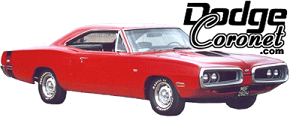
+- DodgeCoronet.com (https://dodgecoronet.com/forum)
+-- Forum: Tech Discussion (https://dodgecoronet.com/forum/forumdisplay.php?fid=4)
+--- Forum: Tech Q&A (https://dodgecoronet.com/forum/forumdisplay.php?fid=16)
+--- Thread: Cylinder and piston damage cause..? (/showthread.php?tid=3379)
Cylinder and piston damage cause..? - Stargazer - 08-21-16
Mopars & Missiles' Wrote:Good question, one that I was wondering about as well.
You state its a 440 and it has been "bored". You don't say "how much" and if a SONIC test was done prior to boring the block. Many blocks have excessive core shift from the factory and can't SAFELY be bored a large amount without first verifying wall thickness with a sonic test. So, what I'm trying to say is if it was bored without checking it, you may have had very thin cylinder thickness in that particular area which could then rupture easily. Especially with a ring that was expanding due to the ends butted up against each other with no place to go. Just a possibility.
If I remember well 0.30 or 0.40? Are those correct sizes to overbore? Done by a engine shop which has a good reputation over here. Not sure if they do sonic tests..
They will now decide to, not sure how to say this in English, put in a "bus" in the damaged cilinder. So the block can be re-used. Or start over with another 440 block. Which is like mine, from 1968..
Cylinder and piston damage cause..? - markz - 08-21-16
Stargazer Wrote:.
They will now decide to, not sure how to say this in English, put in a "bus" in the damaged cilinder. So the block can be re-used. Or start over with another 440 block. Which is like mine, from 1968..
We call it a sleeve. Absolutely nothing wrong with a sleeve. I have run plenty of them in my lifetime.
Cylinder and piston damage cause..? - Stargazer - 08-21-16
A sleeve off course!
I found a number for the overbore done, 0.060 (or 0.60?). Is that possible?
Cylinder and piston damage cause..? - 67440Dodge - 08-21-16
Yup.. .060 can be done.. That definetely helped contribute to the crack occurring.
Cylinder and piston damage cause..? - Mopars & Missiles - 08-21-16
Stargazer Wrote:A sleeve off course!
I found a number for the overbore done, 0.060 (or 0.60?). Is that possible?
Sleeves are just fine if done correctly, but a bit expensive. A really nice feature of sleeving an engine is, you can take the engine back to its STOCK bore size, since they have usually been overbored at least once. I re-sleeved an entire engine to save the matching numbers engine. The previous owner had done exactly what you have described on yours, bored it 0.060" oversize without doing a sonic test to check the wall thickness. When I bought it, it hadn't been installed in the car yet and after checking some things he had done, I became more suspicious of the work and ended up tearing the complete engine down and rebuilding it completely myself. This is when my machinist found the thin walls and for the HP level I was building to, he felt the engine would not hold up, so we sleeved all eight cylinders. Point is, this sleeved engine has been performing very well now for 10 years so don't be afraid to sleeve an engine, especially if it is a numbers matching engine you are trying to save. If not numbers matching, it may be much cheaper to find another block to work with.
As for the 0.060" overbore, many people have been told that Mopar engines can be bored 0.060" with no problems. This is an "old wives tale" and is not entirely true. Due to the variations in the foundry when these engines were cast, many blocks have what is known as "core shift". Some are minor and some are major shifts that make them almost useless for a re-bore. The only way to tell for sure is to perform a "Sonic wall thickness test" prior to machining the block to verify it has enough "meat" in the cylinder walls to allow the desired overbore. It is usually about $100 for a sonic test, and is well worth it to avoid spending $1000+ on machining a block with thin cylinder walls and then suffering a catastrophic engine failure such as yours has.
Just my experiences, take it for whatever its worth to you. Best of luck with your repairs!
Cylinder and piston damage cause..? - Stargazer - 08-22-16
Thanks for this information M&M.
Very helpfull and important to know.
I wil share this with the shop, wonder if they know this kind of stuff. They should..